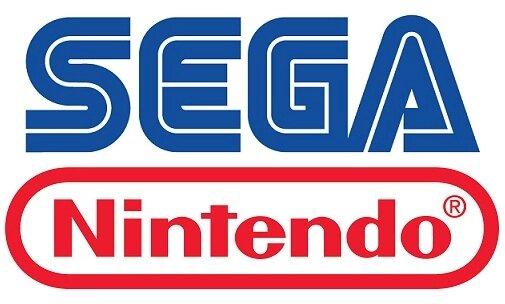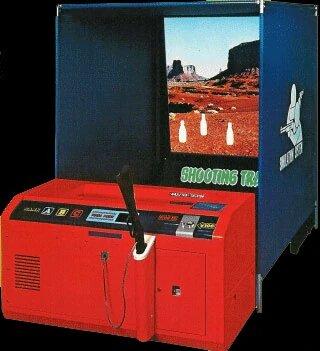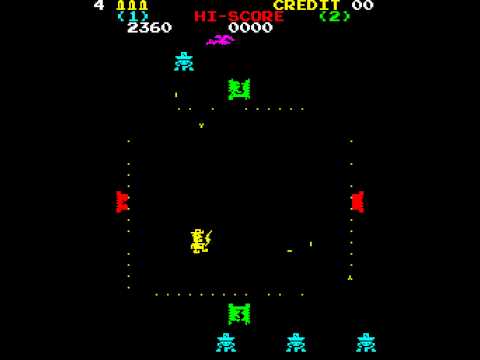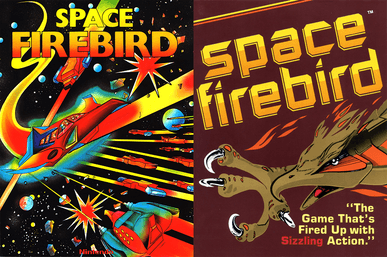
Sega and Nintendo had an epic rivalry during the late 80’s and in the 90’s, but have since worked together many times. But before the console wars, indeed before Nintendo got into making consoles like the Famicom/NES, a number of Nintendo games saw a release in the arcades and were published by none other than Sega. Today we take a look at these collaborations that occurred before the wars.
Wild Gunman

When most of us think of Wild Gunman, we think of the NES Zapper title that Nintendo put out in 1984. It was well received and entered into mainstream pop culture when a fictional arcade version of the game appeared in Back to The Future Part II. Well, fictional arcade version based on the NES game that is.
Wild Gunman is actually a lot older as an IP and was first released in 1974 as an electro-mechanical game by Gunpei Yokoi. It was a game that made use of a light gun that was connected to a 16 mm projection screen. The screen had footage of a gunslinger and players would duel the gunslinger in a quick draw competition. The key to success was that the opponents’ eyes would flash before they drew their guns and fired, and that gave players the clue to shoot.
It was a relatively successful game in the arcades in Japan and a big part of it was the live-action footage that was filmed at the Nara Dreamland theme park in Japan, a theme park inspired by Disneyland that fell into decline when Disney came to Tokyo. The arcade version was considered lost for some time, but recently some of the reels were found, and the game can again be preserved somewhat.
All is well and good, but the story of the game’s release in America is more interesting and since it is being discussed here, you can tell why.
Nintendo had no distribution deal set up for America at the time, or for any country outside of Japan for that matter. This was well before the days of Nintendo of America being a thing and Nintendo needed a partner to get the game to other countries. This is where Sega came in. Sega handled the North American release of the game due to having an established presence already and marketed the game themselves.
Forget F-Zero GX, forget Mario & Sonic at the Olympic Games, forget Super Smash Bros. This was the first team-up between the two companies and it happened well before they become bitter rivals. Remember, the video game scene was still in its early days and alliances like this were commonplace. Just imagine if they kept working together, who knows what they could have done?
Shooting Trainer

An interesting thing about the previously mentioned Wild Gunman was that it was part of a larger series from Nintendo called the Laser Clay Shooting System. This series of simulation games were all electromechanical shooting games that had an overhead projector to display moving targets behind a background. While Wild Gunman is the most well-known of these games due to the NES release and that version’s appearance in Back to The Future Part II, there were other games, all of which greatly helped out Nintendo from financial problems in the ‘70s. Sega distributed not only Wild Gunman but also the much less well-known title Shooting Trainer. Now the name may raise some serious red flags now and would no longer be considered acceptable in today’s environment due to the rise in mass shootings in America, but it actually is a lot more innocuous than it seems. The shooting referenced here is target shooting, the kind that people do for competitions or even carnival games.
In fact, the game itself just featured white bottles that would appear at the bottom of the screen that players would shoot with a plastic rifle attached to the cabinet, The game itself is not very spectacular all things considered, as there really is not any variety to the game. Wild Gunman had exciting gunfights to keep players hooked, but this was just…………..knocking off bottles as they appeared in a western backdrop. The game was not a particularly long game either due to using reels and the best that could be had was a score of 40.
The game received a second version two years later with the name New Shooting Trainer with some differences such as the western theme being more pronounced, and wooden logs surrounding the screen. The bottles would appear faster this time and the highest possible score was now 50. What is more interesting though is that the game was released around the same time as the toy Beam Gun: Duck Hunt which led to the famous Nintendo game we all know today, and is believed to be a major influence on that title. So an obscure game Sega brought over, led to the frustration of many a child when that dog laughed in their faces.
Sources For these sections
Cash-Box-1976-04-24.pdf (worldradiohistory.com)
Sheriff

Ah, Sheriff, Nintendo’s first-ever mascot game. The adventure of Sheriff Jack was the first ever video game from Nintendo to be something that was truly original rather than a clone of another idea, and while the character has found a place as an occasional microgame in the Warioware series and as a Smash Bros assist trophy, the poor guy is not really remembered well. Even his sequel is mostly forgotten these days, but what is interesting about Sheriff is the fact that multiple companies released the game in different regions. While Nintendo released the game in Japan, Exidy released an unofficial North American version called Bandidio that had no mention of Nintendo and was passed off as an Exidy creation.
However, it is the UK release that is of interest to us today as there were a few different releases of the game in the UK. One of these releases is one of the rarest cabinets existing today and is a cocktail cabinet from none other than Sega. The cocktail table cabinet Nintendo used for Sheriff in Japan seems to have also been made by Sega, and while that country saw Nintendo publish the game, Sega decided to handle the UK release themselves. There seems to have been a version released by Bell-Fruit Manufacturing as well, but that was an upright cabinet while the Sega version used the Cocktail format.
While Sheriff may not have gone on to be a big series for Nintendo, its success did help the company embark on new ideas and take on more original concepts, such as one by Sheriff artist Shigeru Miyamoto, something about a monkey, I think. All of the success Sheriff did have though, would not have been possible without help from Sega in making the cabinets for Japan and handling the UK release, meaning Sega is owed a debt for the creation of Mario. There is currently only one known Sega-made Cocktail cabinet of Sheriff left in the UK, and it is in the possession of collector Alex Crowley, who owns one of the most extensive collections of Nintendo Arcade games and related materials.
Space Firebird

Space Firebird is a rather obscure title, but one that has a surprising niche but dedicated following. The game is a space shooter in the style of Galaga but with a few twists thrown in, with the goal being to seek out and destroy three types of enemies known as Firebirds. The Firebirds all behaved differently and took different amounts of hits to defeat. The enemies didn’t just swoop in and attack but would also drop bombs to sabotage players’ ships while navigating. It was actually rather innovative and showed that Nintendo could do something different even when following trends.
Like with Sheriff, Space Firebird was released by multiple companies including twice in North America. First by Far East Video, and then a release from Sega. However, unlike the other examples here, Space Firebird was not directly released in North America by Sega, but rather by a subsidiary of the company.
Gremlin Industries was an arcade game manufacturer that was active between 1971 and 1983 and produced a variety of games including Blockade and Frogs, the latter of which featured a jumping character years before Donkey Kong. In 1978 the company was purchased by Sega and became known as Sega-Gremlin and would continue developing games including Head-On and a Star Trek arcade game. Sega-Gremlin would also distribute many arcade games for other companies including Moon Cresta from Nichibutsu, Frogger from Konami and of course Space Firebird from Nintendo. Sadly, Space Firebird marked the end of an era as it was actually the last time Sega would distribute and publish an arcade game for Nintendo in North America. If the deal had lasted any longer, there is a good chance Nintendo of America would not have come to be, which would also mean Donkey Kong, a game made to help Nintendo of America get a presence in the country, would not have existed. Considering the legacy of that game, maybe it was time to end the deal.
Sources
https://flyers.arcade-museum.com/?page=archive&db=videodb&name=space+firebird
https://flyers.arcade-museum.com/flyers_video/nintendo/22118202.jpg
Of course this is not getting into the nature of who developed the games for Nintendo as that is another topic altogether but these games discussed here are an important part of the history of both Nintendo and Sega and gaming in general and this is without getting into Nintendo publishing a licensed version of Sega’s Head On II known as Head On N. Perhaps if we discuss Nintendo publishing other companies’ games in the arcades, we will discuss that matter then. Until then, what games do you feel are an important part of both Sega and Nintendo’s joined history?

